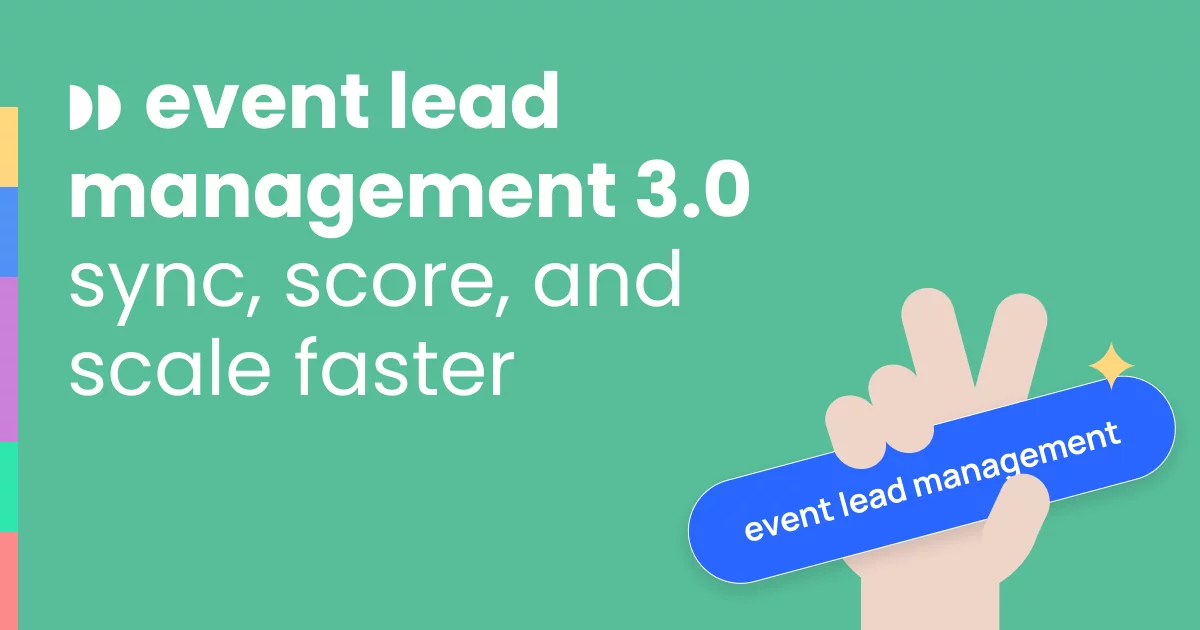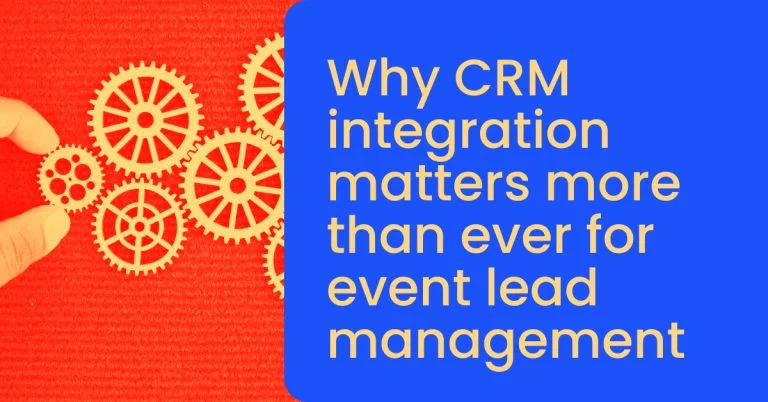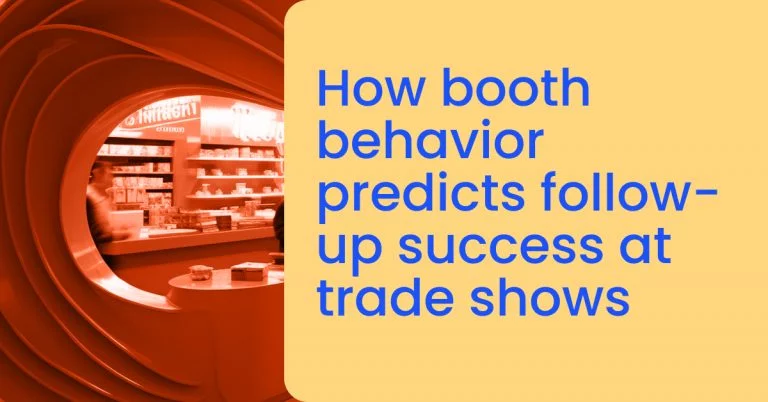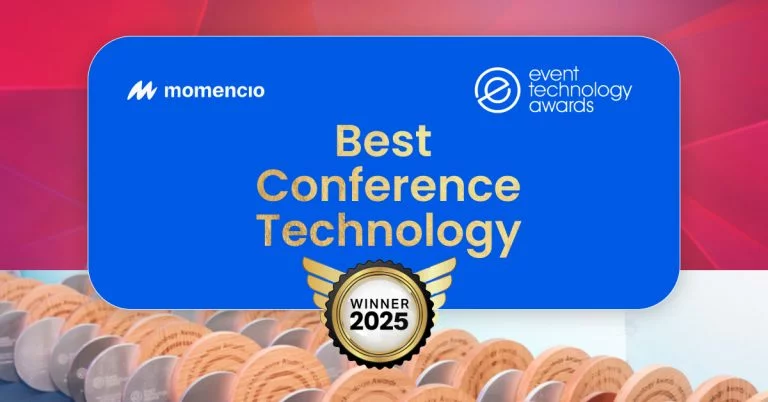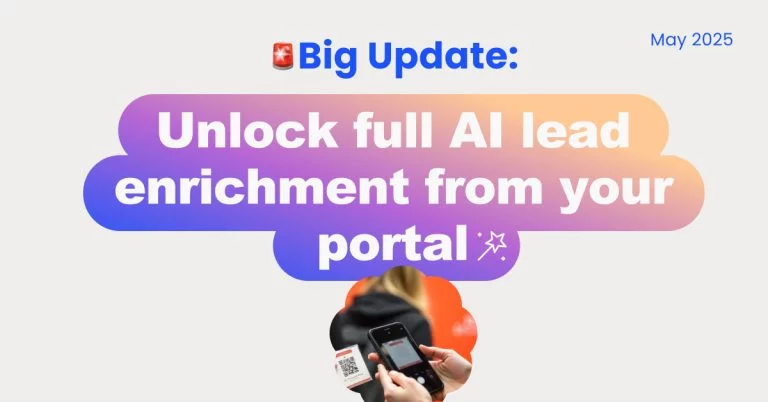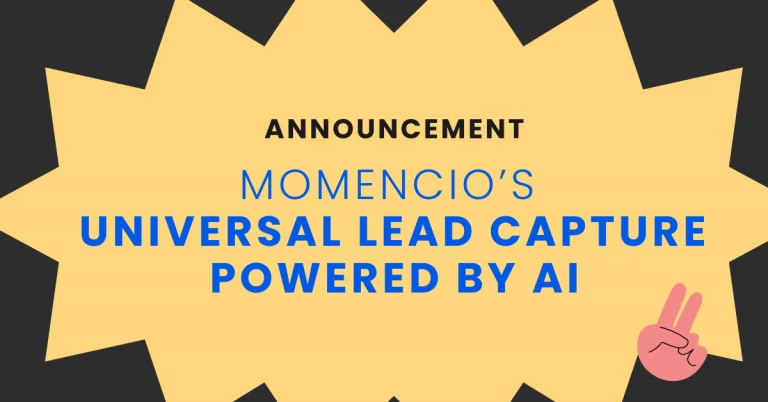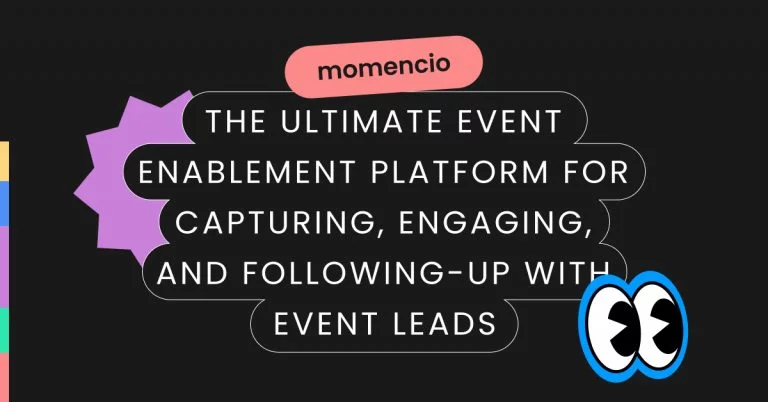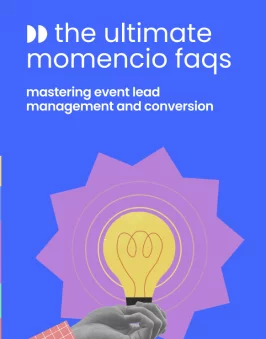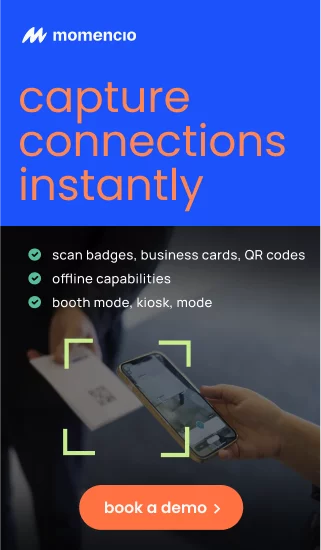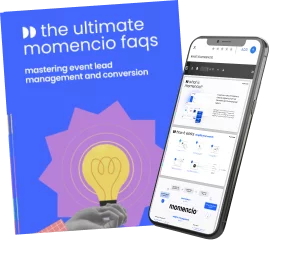Companies with aligned sales and marketing teams are 67% more likely to close deals and generate 32% higher revenue annually. Yet, many organizations still struggle to create seamless collaboration between these departments, especially when managing event leads. Without proper alignment, promising leads can fall through the cracks, resulting in wasted efforts and lost revenue opportunities.
Events, whether conferences, trade shows, or webinars, generate high volumes of leads. However, 79% of these leads never convert due to a lack of proper follow-ups and nurturing strategies. This gap highlights the need for coordinated lead management processes driven by unified sales and marketing teams.
A strong partnership between these departments improves efficiency, enables timely responses, and increases conversion rates. With shared goals, integrated tools, and automated workflows, businesses can maximize the ROI of their events while turning leads into long-term customers.
This article explores how businesses can align their sales and marketing teams to optimize event lead management. From overcoming communication barriers to leveraging advanced tools like CRM systems and marketing automation, we’ll outline actionable strategies to streamline workflows, improve follow-ups, and enhance event ROI.
Let’s dive into the steps to create synergy between sales and marketing and transform your event leads into sales opportunities.
The impact of alignment on lead management success
Sales and marketing alignment is no longer optional—it’s a critical driver for business success. Organizations that maintain strong collaboration between these departments report 208% higher marketing revenue compared to companies with misaligned teams. Despite these advantages, only 8% of companies report complete alignment between sales and marketing processes.
Why does alignment matter?
Improved lead quality and nurturing
When sales and marketing teams work in silos, miscommunication leads to poor-quality leads and inefficient follow-ups. In contrast, aligned teams define shared buyer personas and scoring criteria, ensuring only high-intent leads are prioritized.
Shorter sales cycles
Collaboration reduces time spent on unqualified leads. Marketing teams provide sales with richer insights using tools like CRM and real-time analytics, enabling faster conversions.
Higher ROI from events
Events are significant investments. Aligned teams ensure that each lead is effectively captured, tracked, and nurtured post-event. With joint reporting systems, they can track lead progression through the funnel and measure ROI accurately.
Better data utilization
Integrated CRM systems empower teams with real-time insights into lead behavior. Marketing can craft targeted campaigns, while sales can engage leads based on pre-defined triggers.
The risks of misalignment
Without alignment, businesses face challenges that reduce lead management efficiency:
- Lead leakage: Disconnected teams result in up to 70% of marketing leads being ignored by sales.
- Delayed follow-ups: Teams working in silos often miss the five-minute golden window to follow up with leads, reducing conversion rates by 400%.
- Duplicate efforts: Without shared systems, duplicate tasks increase overhead costs and reduce productivity.
The role of technology in bridging the gap
Modern tools like CRM platforms, marketing automation software, and lead scoring systems help teams maintain alignment. For instance:
- CRM integration: Centralizes lead information for both teams, providing a single source of truth.
- Marketing automation: Streamlines follow-ups and personalizes outreach based on behavioral triggers.
- Lead scoring: Helps prioritize high-value leads, ensuring no opportunity is missed.
Common challenges in event lead management and how alignment solves them
Effective lead management during and after events is often hindered by operational inefficiencies, communication gaps, and fragmented processes. These challenges create obstacles in transforming leads into sales-ready opportunities. However, aligning sales and marketing teams helps eliminate these issues, enabling seamless collaboration and execution.
Challenge #1: poor communication between teams
Sales and marketing teams often operate independently, leading to misaligned strategies and fragmented workflows. Marketing might focus on generating leads, while sales prioritize closing deals—without considering the steps in between. This disconnect causes missed opportunities and ineffective lead nurturing.
How alignment solves it:
- Unified messaging: Creating shared buyer personas and value propositions ensures consistent messaging across all interactions.
- Joint planning sessions: Regular meetings to set goals, discuss strategies, and review outcomes keep both teams focused on common objectives.
- Shared tools and platforms: Implementing a centralized CRM system provides real-time visibility into lead progress, enabling both teams to track interactions and follow-ups effectively.
Challenge #2: lack of shared goals and metrics
Marketing teams may focus on generating a high volume of leads, while sales teams prioritize closing high-quality leads. This lack of shared goals creates friction and makes it difficult to measure success accurately.
How alignment solves it:
- Agreed-upon KPIs: Teams can define metrics such as lead quality, conversion rates, and pipeline growth to measure success collectively.
- Score-based prioritization: Adopting lead scoring techniques allows teams to rank leads based on engagement, demographic fit, and behavior, focusing on the most promising opportunities.
- Goal transparency: Establishing a shared dashboard keeps progress visible, fostering accountability and collaboration.
Challenge #3: inefficient follow-ups and missed opportunities
A common pitfall after events is the delay in following up with leads, resulting in lost momentum and reduced interest. Leads often fall through the cracks due to manual processes and lack of ownership.
How alignment solves it:
- Automated follow-ups: Leveraging marketing automation tools helps schedule and personalize follow-ups based on predefined triggers, ensuring timely communication.
- Clear handoff processes: Defining roles and responsibilities during the handoff between marketing and sales reduces lead leakage and delays.
- Content sharing libraries: Providing sales teams with ready-to-use content (e.g., email templates, brochures) simplifies follow-ups and ensures consistency.
Challenge #4: uncoordinated data management
Disconnected systems and scattered data storage often lead to inconsistencies in tracking lead information. Without centralized access, teams struggle to gain insights into lead behavior and preferences.
How alignment solves it:
- CRM integration: A unified CRM system allows teams to store and access lead data in one place, ensuring that information is always up-to-date.
- Data mapping tools: Sales and marketing can map customer journeys to better understand touchpoints and tailor interactions accordingly.
- Analytics dashboards: Shared dashboards provide insights into performance metrics, enabling teams to make data-driven decisions and adjust strategies in real time.
Challenge #5: undefined roles and responsibilities
Misunderstandings about who owns specific tasks, such as lead scoring, nurturing, or follow-ups, often result in duplicate efforts or incomplete actions.
How alignment solves it:
- Documented workflows: Creating clear workflows outlines responsibilities for every stage of the lead management process.
- Team training programs: Cross-training ensures that both teams understand each other’s roles, tools, and objectives, fostering better collaboration.
- Performance reviews: Regular evaluations and feedback sessions identify gaps and opportunities for improvement.
Challenge #6: failure to adapt to real-time insights
Events generate vast amounts of data, from attendee interactions to engagement metrics. Teams often struggle to act quickly on this information, losing the ability to personalize follow-ups.
How alignment solves it:
- Real-time lead scoring: Implementing scoring systems based on behavior and interactions during events helps prioritize leads immediately.
- Flexible messaging tools: Teams can create tailored content based on real-time insights, enhancing personalization.
- Instant notifications: Integrating notifications into CRM systems ensures that sales teams are alerted to high-priority leads as they engage.
Key takeaways
- Poor communication and lack of shared goals between sales and marketing teams often hinder lead management success.
- Alignment eliminates gaps, promotes real-time data sharing, and enables faster follow-ups through automation tools.
- Centralized CRM systems and automated workflows create a seamless process for managing and nurturing event leads.
- Defining roles, responsibilities, and metrics keeps both teams focused on a unified goal—converting leads into sales-ready opportunities.
Building a unified sales and marketing strategy for events
Creating a unified strategy for sales and marketing teams requires more than just alignment—it demands a well-defined framework that promotes collaboration, accountability, and efficiency. A cohesive strategy ensures that both teams are equipped to capture, nurture, and convert leads generated during events into valuable opportunities.
Step #1: establish shared goals and KPIs
Why it matters:
When sales and marketing teams operate with separate goals, they risk miscommunication and conflicting priorities. Shared objectives ensure consistency and focus, enabling both teams to work toward the same outcomes.
How to implement:
- Define success metrics together: Agree on metrics such as lead volume, conversion rates, and pipeline value.
- Set lead quality standards: Establish lead qualification criteria, ensuring both teams recognize high-value prospects.
- Align revenue targets: Link marketing efforts directly to revenue goals, emphasizing ROI-driven campaigns.
Example goal framework:
- Increase marketing-qualified leads (MQLs) by 20% in the next quarter.
- Improve conversion rates from MQLs to sales-qualified leads (SQLs) by 15%.
- Shorten the average sales cycle by 10%.
Step #2: develop an integrated communication plan
Why it matters:
Effective communication reduces silos and encourages real-time collaboration, making it easier to address challenges and adapt strategies during events.
How to implement:
- Weekly sync meetings: Schedule meetings to review lead performance, discuss bottlenecks, and refine processes.
- Shared dashboards: Use CRM and analytics platforms to track leads and engagement metrics in one place.
- Instant notifications: Enable real-time alerts for hot leads, ensuring prompt follow-ups.
Step #3: build a lead scoring and qualification system
Why it matters:
Not all leads are created equal. Prioritizing high-value leads based on engagement and demographic data helps teams focus efforts on the best opportunities.
How to implement:
- Score-based prioritization: Assign scores based on attendee actions, such as booth visits, content downloads, and session participation.
- Behavioral triggers: Use marketing automation to identify and act on specific behaviors, like repeated website visits or email opens.
- Lead segmentation: Group leads into categories based on readiness—hot, warm, or cold—for targeted nurturing.
Example scoring framework:
- +10 points for visiting a product demo.
- +15 points for downloading content.
- +20 points for scheduling a meeting during the event.
Step #4: utilize CRM tools for seamless data sharing
Why it matters:
A centralized CRM platform allows both teams to track lead activity, share insights, and streamline follow-ups without duplicating efforts.
How to implement:
- CRM integration: Sync lead data directly from event badge scanners or mobile apps into the CRM for immediate tracking.
- Real-time updates: Set up automated workflows to notify sales reps about lead activity as it happens.
- Custom fields and tags: Organize leads by source, interest level, and engagement history for better segmentation.
Step #5: leverage marketing automation for follow-ups
Why it matters:
Automation accelerates the follow-up process, ensuring timely engagement without overwhelming sales teams. Personalized emails, content suggestions, and reminders keep leads engaged after the event.
How to implement:
- Automated email sequences: Trigger email campaigns based on lead actions, such as booth visits or content downloads.
- Dynamic content personalization: Send customized messages based on attendees’ interests and behaviors.
- Follow-up schedules: Pre-set reminders for sales reps to call or email leads at key intervals.
Example follow-up workflow:
- Day 1: Send a thank-you email with event highlights.
- Day 3: Share additional resources like case studies or product demos.
- Day 7: Offer a personalized consultation or product demo.
Step #6: create post-event feedback loops
Why it matters:
Continuous feedback helps refine strategies and improve performance for future events.
How to implement:
- Post-event surveys: Collect attendee feedback to assess interest levels and satisfaction.
- Internal reviews: Conduct debriefs to evaluate lead quality, follow-up success, and ROI.
- Performance analysis reports: Generate reports to identify trends, gaps, and areas for improvement.
Step #7: align content marketing with sales objectives
Why it matters:
Content marketing fuels lead nurturing efforts by delivering value through educational resources and personalized messages.
How to implement:
- Content mapping: Develop resources for each stage of the buyer’s journey—awareness, consideration, and decision-making.
- Sales enablement kits: Provide sales teams with brochures, case studies, and demo scripts to support outreach.
- Interactive tools: Use microsites, videos, and calculators to engage leads post-event.
Key takeaways
- Aligning sales and marketing through shared goals and KPIs enhances accountability and improves lead management processes.
- Tools like CRM platforms and marketing automation streamline data sharing, lead scoring, and follow-ups.
- Building post-event feedback loops enables teams to refine strategies for greater ROI in future events.
- Integrating content marketing into the process nurtures leads and positions sales teams for stronger conversations.
Implementing effective post-event lead nurturing strategies
Effective lead nurturing after an event is the bridge between initial interest and long-term sales success. It ensures that the connections made during an event evolve into meaningful relationships and, ultimately, revenue-generating opportunities. This section outlines practical strategies to nurture leads post-event and maintain momentum.
1. Prioritize leads with segmentation and scoring
Why it’s important
Not all leads are ready to convert immediately. Some may require further nurturing, while others may be sales-ready. Effective segmentation and scoring prevent wasted efforts and help focus on high-value leads.
How to implement
Segment leads into categories such as “hot,” “warm,” and “cold” based on their behavior at the event—booth visits, demo participation, or content downloads. Assign scores to leads based on predefined criteria, including engagement level, budget, and decision-making authority. Use CRM tools to automate scoring and categorize leads for follow-up strategies. For instance, “hot” leads may warrant immediate sales calls, while “warm” leads may need nurturing through targeted content.
2. Personalize follow-ups for engagement
Why it’s important
Generic follow-ups often get ignored. Personalized messaging demonstrates attentiveness and helps sustain interest. It reinforces the initial connection made during the event.
How to implement
Send personalized thank-you emails within 24–48 hours after the event. Reference specific interactions, such as a demo discussion, and attach relevant resources like brochures, case studies, or video links. Incorporate dynamic content in email marketing tools to tailor messages based on each lead’s preferences and behaviors. Offering value-driven content keeps leads engaged while moving them through the sales funnel.
3. Deliver valuable content at every stage
Why it’s important
Nurturing leads requires continuous engagement. Providing helpful and educational content positions your brand as a trusted resource and keeps your leads interested.
How to implement
Map out content for each stage of the buyer’s journey. Early-stage leads may benefit from blogs, infographics, and industry reports, while mid-funnel leads may respond better to webinars, case studies, and product comparisons. Develop templates for proposals, pricing guides, and ROI calculators for late-stage leads. Use marketing automation platforms to deliver this content via scheduled email sequences and retargeting ads.
4. Leverage automation for timely outreach
Why it’s important
Timeliness is crucial for post-event lead nurturing. Delayed follow-ups can result in lost interest, while consistent outreach keeps your business top-of-mind.
How to implement
Set up automated workflows to trigger emails based on predefined actions. For instance, if a lead downloads a whitepaper, an automated email can follow up with related content. Use CRM integrations to schedule reminders for sales teams to make personal calls or send direct emails. Automation not only reduces manual effort but also ensures that no lead is left unattended.
5. Schedule follow-up meetings and demos
Why it’s important
Converting leads requires moving beyond emails and into direct conversations. Scheduling meetings and product demos establishes deeper connections and accelerates decision-making.
How to implement
Include clear calls-to-action in emails and landing pages, encouraging leads to book meetings directly through scheduling tools like Calendly. Offer incentives such as free consultations or exclusive trials to entice prospects to take the next step. During meetings, highlight solutions that address their specific pain points discussed during the event.
6. Track engagement and optimize strategies
Why it’s important
Analyzing lead engagement helps refine strategies and improve future campaigns. Tracking metrics ensures follow-ups remain relevant and aligned with lead behavior.
How to implement
Use CRM dashboards to monitor email open rates, click-throughs, and content downloads. Review engagement patterns to identify what resonates most with your audience. Adapt workflows and content strategies based on this data, ensuring your nurturing process remains effective. Schedule periodic team reviews to discuss insights and refine tactics.
7. Maintain consistency through multi-channel outreach
Why it’s important
Today’s buyers interact with brands across multiple channels. A consistent presence on email, social media, and direct calls strengthens relationships and increases conversion rates.
How to implement
Create a coordinated outreach plan that includes email campaigns, LinkedIn messages, and social media ads. Repurpose content for different platforms to maintain engagement. For example, turn a webinar recording into short clips for social media posts and direct emails. Using multiple channels ensures you remain visible without overwhelming leads.
Key takeaways
Prioritizing leads through segmentation and scoring helps focus efforts on the most promising opportunities. Personalizing follow-ups builds stronger connections, while valuable content nurtures leads through every stage of the sales funnel. Marketing automation and CRM tools streamline outreach, ensuring timely engagement and follow-ups. Tracking engagement metrics refines strategies for continuous improvement, while multi-channel outreach maintains consistent visibility and keeps leads engaged.
5 Key tips for creating seamless collaboration between teams
1. Establish clear roles and responsibilities
Define who owns each stage of the lead management process. Marketing focuses on lead generation and nurturing, while sales handles conversions. Clear roles prevent overlap and missed opportunities.
2. Use shared tools and dashboards
Implement a centralized CRM system for real-time updates. Shared dashboards keep both teams aligned on lead status, performance metrics, and follow-ups
3. Schedule regular alignment meetings
Host weekly or biweekly meetings to review goals, analyze performance, and address challenges. This keeps communication open and fosters accountability.
4. Create joint KPIs and incentives
Align teams with shared performance metrics like lead conversion rates and pipeline growth. Offer joint incentives to encourage collaboration and focus on results.
5. Enable cross-training
Train teams on each other’s processes and tools to enhance understanding and teamwork. Marketing learns sales priorities, and sales understands marketing strategies.
Conclusion
Aligning your sales and marketing teams is the cornerstone of effective lead management, especially in the context of events. Shared goals, streamlined workflows, and advanced tools ensure that every lead is captured, nurtured, and converted into valuable business opportunities.
Key strategies like defining roles, leveraging CRM systems, and using marketing automation create a cohesive framework for collaboration. With seamless communication and actionable insights, teams can reduce lead leakage, improve follow-up timing, and boost ROI.
Now is the time to transform your event lead management strategy. Equip your teams with the right tools and frameworks to drive growth and maximize results.
momencio can simplify your lead management process, improve collaboration, and deliver higher ROI. Book a free demo today to see how momencio can help your teams capture, nurture, and convert leads effortlessly.
FAQs
- How does aligning sales and marketing improve lead management?
- Aligning teams ensures seamless communication, reduces lead leakage, and speeds up follow-ups. It allows both teams to work toward shared goals, improving efficiency and conversion rates.
- What tools can help streamline lead tracking and follow-ups?
- CRM systems, marketing automation platforms, and lead scoring tools help centralize data, prioritize leads, and automate follow-ups, ensuring no lead is overlooked.
- How can CRM systems optimize post-event lead nurturing?
- CRM systems organize and store lead data, enabling personalized follow-ups and tracking interactions. They also provide real-time insights for continuous improvement.
- What are the best practices for lead scoring?
- Assign scores based on engagement metrics like booth visits, downloads, or demo requests. Use predefined criteria such as budget, authority, and readiness to buy for prioritization.
- How quickly should teams follow up with leads after events?
- Follow-ups should be initiated within 24–48 hours after the event while the interaction is still fresh. Automated email workflows ensure timely communication.
